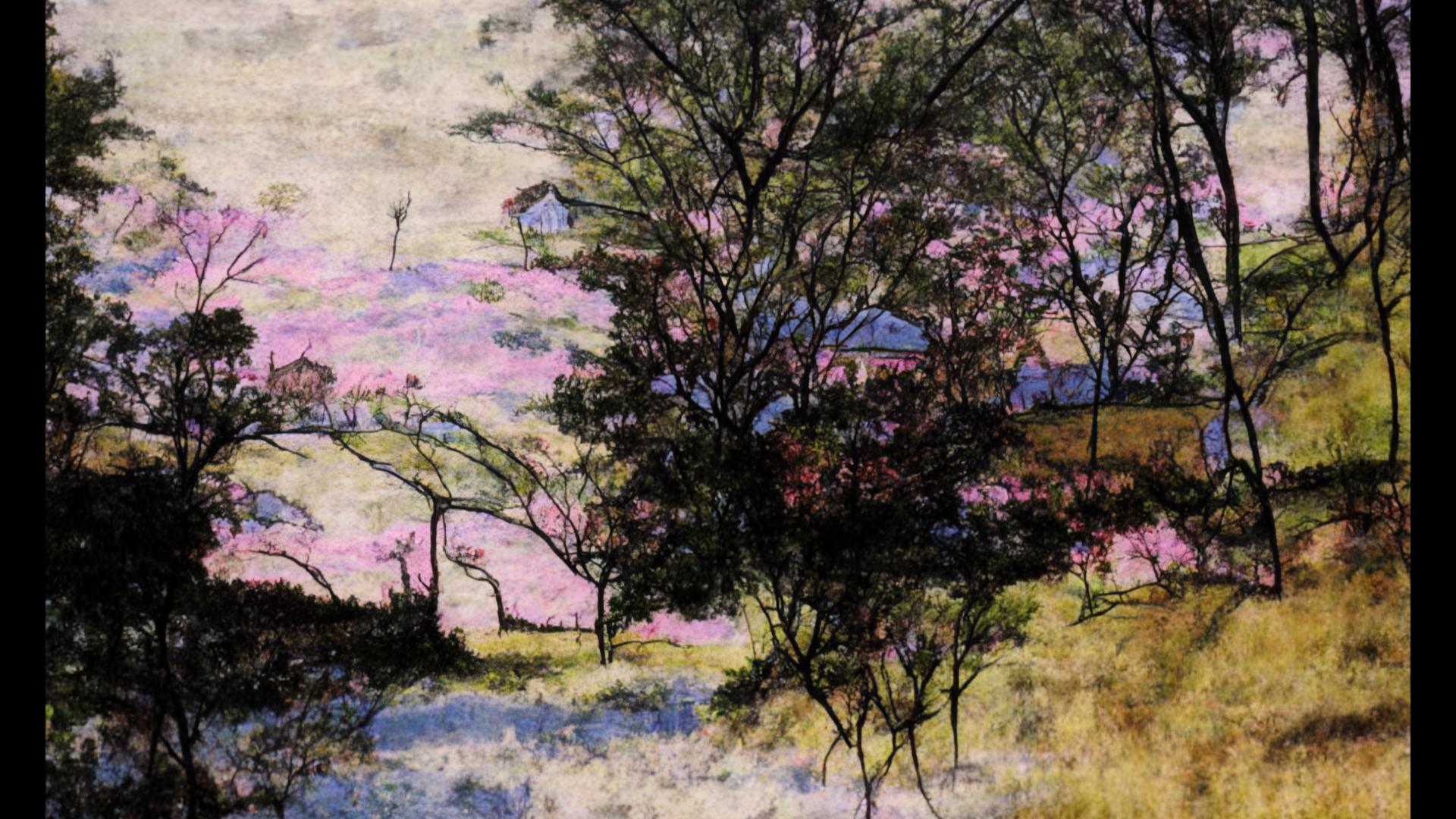
Treeroots [i]
The Imaginary Entity [i]
About the project: The Imaginary Entity [i]
In the project The Imaginary Entity [i], we explore new perspectives and realities using AI technology. By engaging in a digital dialogue with Vincent van Gogh’s work, we weave our insights and imagination to create innovative artworks. These pieces blend physical and digital worlds, bridging past and present, offering a unique view of Van Gogh’s legacy. One of the most intriguing works we have rediscovered in this project is his final masterpiece, Tree Roots.
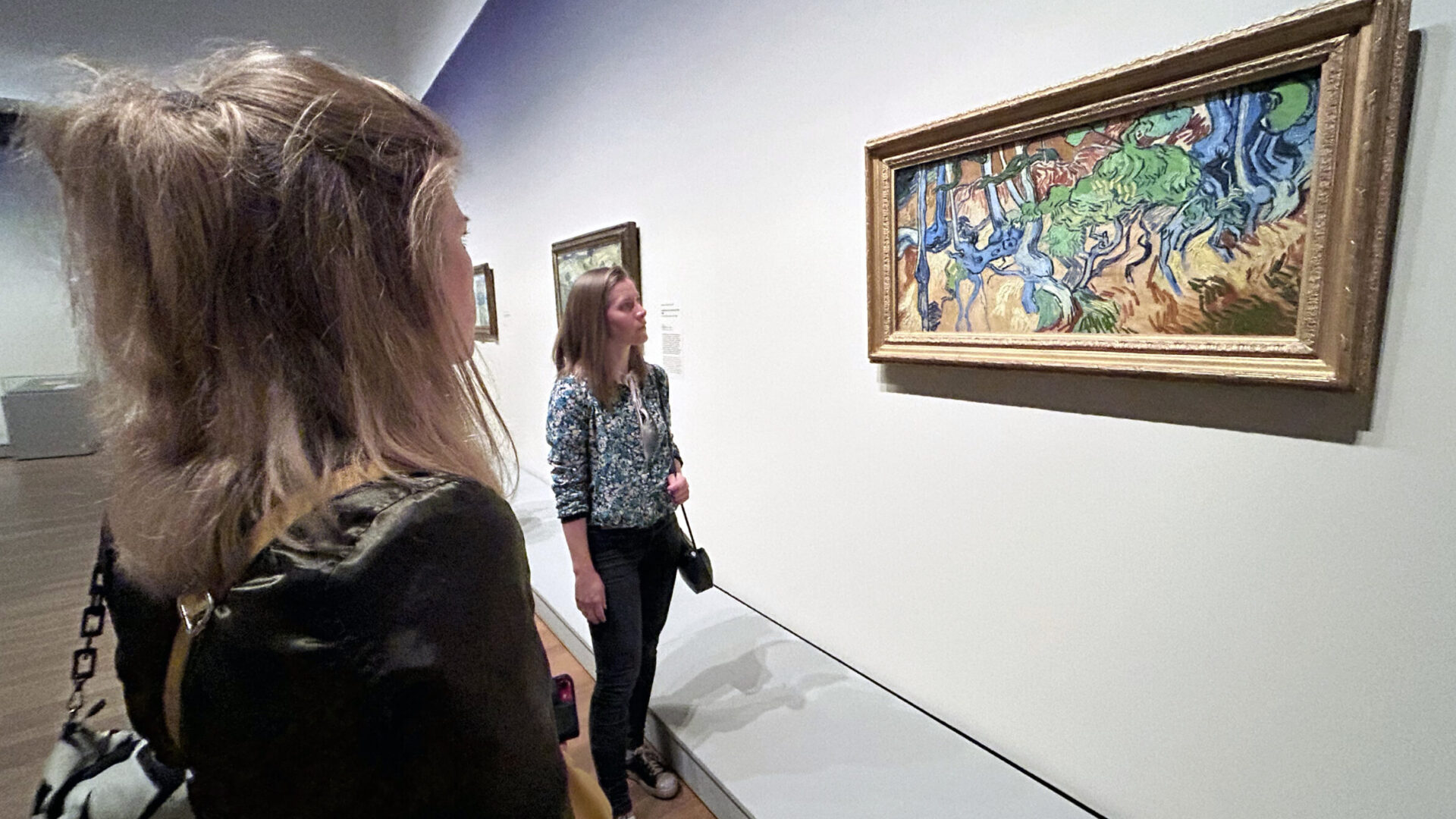
Tree Roots: A Final Masterpiece
The significance of time in art cannot be overstated. In the case of Van Gogh’s Tree Roots and our digital reinterpretations, time plays a crucial role in shaping our perception. Painted in July 1890, this work is considered one of Van Gogh’s last creations. When we started our Artist-in-Residence program, the exact location where Tree Rootswas painted had only recently been discovered. Researchers identified the specific spot in 2020 thanks to an old photograph, shedding new light on Van Gogh’s final days.
This painting is unique because of its atypical composition. Van Gogh’s intense focus on a tangled mass of roots and trunks deviates from his usual subjects. The vibrant colors and dynamic brushstrokes resonate with Van Gogh’s own life and career, filled with intense emotions and a constant search for new forms of expression.
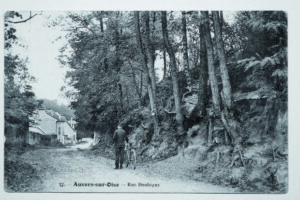
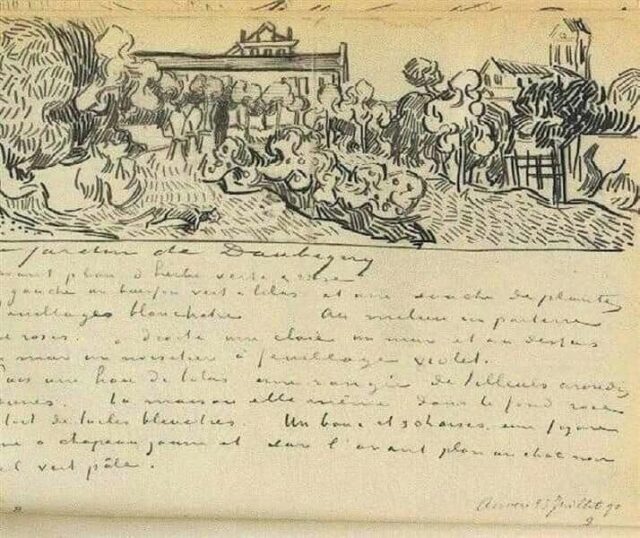
Foreground of green and pink grass, on the left a green and lilac bush and a stem of plants with whitish foliage. In the middle a bed of roses. To the right a hurdle, a wall, and above the wall a hazel tree with violet foliage. Then a hedge of lilac, a row of rounded yellow lime trees. The house itself in the background, pink with a roof of bluish tiles. A bench and 3 chairs, a dark figure with a yellow hat, and in the foreground a black cat. Sky pale green.
His Last Letter
What particularly struck us was Van Gogh’s last letter, in which he beautifully describes the fate of being an artist. With a mix of frustration and drive, he paints the image of an ‘artist through and through.’ This letter, full of poetic descriptions and deep insights, reflects his tireless drive to express himself. Nature plays a prominent role in this. Van Gogh’s descriptions of the landscapes of Southern France, the fields of Arles, and the gardens of Auvers-sur-Oise reveal a poetic sensitivity and deep connection with the natural world. Tree Rootsthus forms the climax of his creative and personal struggle.
Light, Color, and Movement
The sunlight hitting Tree Roots from the left suggests a specific time of day, likely late afternoon. In our digital interpretations, we have enhanced these elements of time and light. By casting a soft light beam across the work, we symbolize the passage of time and changing daylight. This adds a new layer of light, color, and movement to the artwork.
Our digital works aesthetically integrate space and time by adding movement and changes in light and shadow. This creates a visual experience that invites the viewer to reflect on the inseparable connection between time and space in both the natural world and artistic expression. We have chosen to be guided by poetic and imaginative thinking rather than purely rational interpretations.
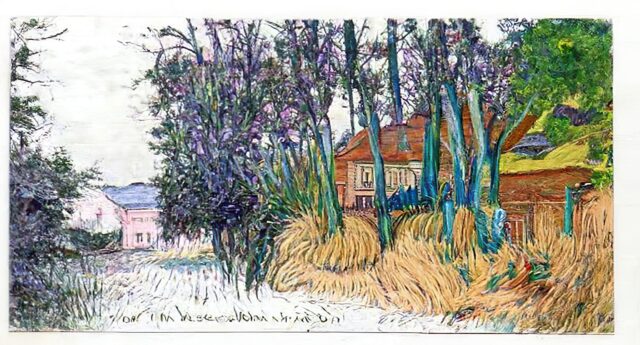
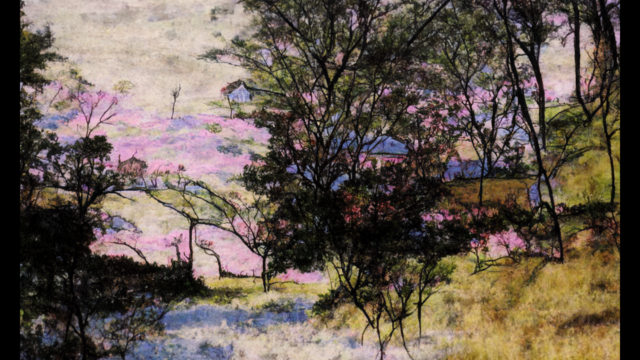
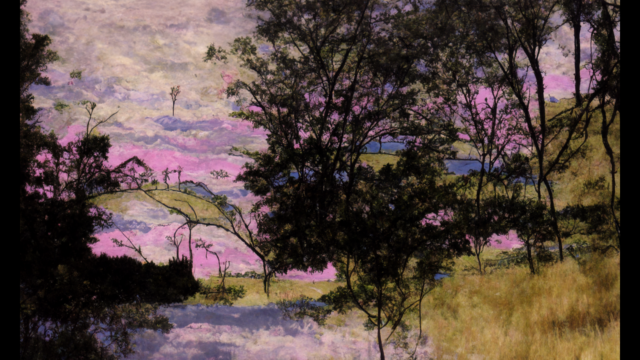
Light in Impressionism
The use of light is crucial in Impressionist painting. Artists like Monet, Renoir, and Degas emphasized the depiction of natural light and its changing effects on the landscape and objects. Although Van Gogh is often associated with Post-Impressionism, he was greatly influenced by Impressionist techniques during his stay in Paris.
Impressionists often painted outdoors (en plein air) to capture the effects of light and atmosphere directly. They used colorful shadows with complementary colors to depict the vibration of light. Quick and loose brushstrokes were employed to capture the fleeting effects of light and atmosphere, creating a sense of movement and dynamism. Light was used to suggest the time of day, seasons, and weather conditions, essential for capturing the “moment” in their works, a central theme of Impressionism.
Invitation to Experience
We invite you to explore this new dimension of time and light in our works and experience the beauty and depth of Van Gogh’s legacy in a modern and interactive way. By integrating AI and digital technology, we hope to bridge the past and present and discover new ways to explore and celebrate the complexity of human perception.
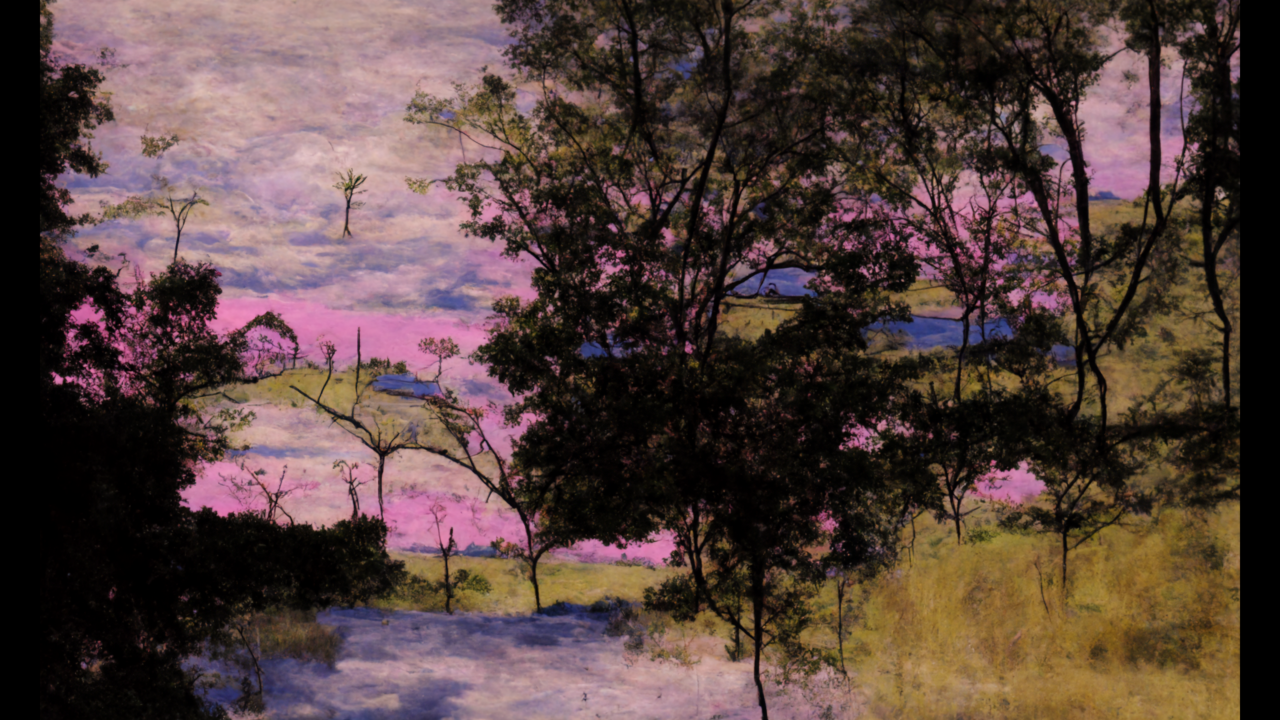
Tree Roots [i]
